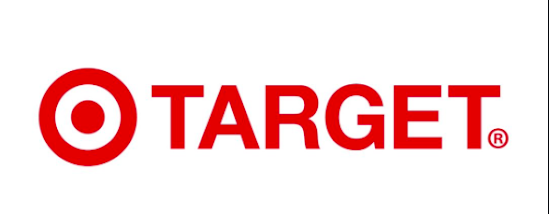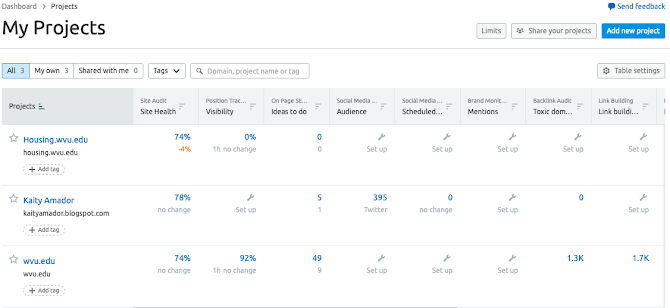Target Becomes a Top 10 US E-Commerce Retailer
Target Becomes a Top 10 US E-Commerce Retailer
How did they do it?
When you think of large e-commerce retailers, your mind may jump straight to Amazon and that’s for good reason! Amazon currently holds 38.7% of US retail e-commerce sales, which is 6x higher than its closest competitor, Walmart (Perez, 2020). This chart below depicts the top 10 US companies dominating in the retail ecommerce space.
Target, as depicted above, currently owns 1.2% of US retail ecommerce sales, and recently broke into the top 10 list in 2020. The brand was ranked 11th, but in 2020, they jumped 3 spots to 8th place, and we’ll be exploring how Target was able to achieve this, and how SEO and web analytics played their part in Target’s success.
Target's Growth by the Numbers
Target saw an e-commerce growth of 118% in Q4 of 2020, compared to the previous year (Digital eCommerce 360, 2020). This was driven by the brand’s omnichannel approach gaining popularity during the COVID-19 pandemic. Target’s in-store pickup grew by 70% and their curbside pickup grew by 600% in 2020, helping Target’s online sales exceed $16 billion in 2020 (Digital eCommerce 360, 2020). Below is a visual representation of Target’s eCommerce growth in 2020, showing just how vital online sales are to the company.
Target reimagined what online shopping looked like for customers, by offering innovative fulfillment options (i.e. next-day pick up, same-day drive up and shipt) and in-store remodels that accommodated space for digital sales (making room in-stores for online order pickups), (Perez, 2020). This forward-thinking approach has helped Target break into the top 10 US Ecommerce Retailers list, and drove the following Q4 results in 2020 (Digital commerce 360, 2021):
- · Ecommerce growth of 118% compared with Q4 2019.
- · Same-day services, including order pickup, curbside pickup and deliveries through Shipt, grew 212%, led by a more than 500% growth in curbside.
- · Total revenue of $28.34 billion, up 21.1% from $23.40 billion.
- · Net earnings of $1.38 billion, up from $833.0 million.
Target’s Traffic Overview
Utilizing similarweb, a website that provides web analytics services and information, we can track Target’s digital insights. Starting with Target’s online engagement, their website has 197.08 million total visits, with the average visit duration lasting 4 minutes and 11 seconds. Target also averages a 47.81% bounce rate and customers visit approximately 5.27 pages per visit. Comparing these analytics to Target’s closest competitor Walmart, we can see below that Target is outperforming Walmart in pages per visit and bounce rate, but still lags in overall total visits and average visit duration. Below you can also view how Target stacks up against Amazon, Bed Bath & Beyond and Costco (Similarweb, 2021).
Target’s Traffic Sources
Alongside Target’s site engagement, we can view where Target’s traffic is coming from and what strategies the brand is putting it’s efforts towards. 52.16% of Target’s traffic is Direct, meaning that visitors accessed the Target site directly (SimilarWeb, 2021). For example, visitors could:
1. Directly type target’s URL into their browser address bar
2. Access the Target site through a saved bookmark
3. Visit Target from a link contained in an e-mail (URL shared by 3rd party)
Most of the remaining traffic is sourced via search, at about 40.2% (SimilarWeb, 2021).. Search traffic includes visitor traffic from organic searches (i.e Google searches) and paid search from Target themselves. Of Target’s search traffic, 72.5% is organic and 27.5% is a result of paid searches (SimilarWeb, 2021).. For organic searches, Target’s top 5 keywords, as of March 2021 are:
· Target (39.87%)
· Target.com (1.27%)
· Target Ps5 (.96%)
· Target near me (.89%)
· Target online (.71%)
For paid searches, Target’s top 5 keywords, as of March 2021 are:
· Target (1.43%)
· Nintendo switch (.35%)
· Target careers (.09%)
· Squishmallows (.07%)
· Airpods (.06%)
As you can see, through the paid search keywords, Target is targeting customers searching for these specific popular products (SimilarWeb, 2021).
The rest of Target’s traffic sources come from referrals at 2.35%, social media at 2.11%, mail at .81% and display ads at 2.38% (SimiliarWeb, 2021).
· Referrals come from the following sites; slickdeals.net 14.13%, techradar.com 3.96%, nowinstock.net 3.71%%, hawkaffinity.com 3.4% and tomsguide.com 2.76%.
· Social media %’s: Pinterest 24.18%, Twitter 23.65%, Reddit 17.81%, YouTube 15.76% and Facebook 14.31%
· Display ads, top publishers: slickdeals.net, poki.com, techradar.com, tomsguide.com and cnet.com
Target’s Data Collection
Interest-Based Advertising
Target employs interest-based advertising (IBA) also known as online behavioral advertising, to display ads tailored to customers based on their individual interest and how they shop online (Target IBA, 2021). Utilizing third-party companies, Target collects data and information when audiences visit their website and mobile apps. Information collected includes “non-identifiable information (e.g., click stream information, browser type, time and date, subject of advertisements clicked or scrolled over, hardware/software information, cookie and session ID) and personally identifiable information (e.g., static IP address),” (Target IBA, 2021). IBA is a popular tool used widely by eCommerce retailers to enhance customer experience and target a customer’s specific wants and needs.
Information Collected: Type of Info and Methods of Collection
Target collects the following information from their site visitors and customers:
· Name
· Mailing address
· E-mail address
· Phone (or mobile) number
· Driver’s license number
· Credit/debit card number
· Purchase/return/exchange information
· Registry or list information
· Your mobile device information (e.g., device model, operating system version, device date and time, unique device identifiers, mobile network information)
· How you use our sites and mobile applications, search terms, pages you visit on Target.com and our mobile applications and application performance
· Geo-location and in-store location
· Media Information (e.g. Advertising engagement in social, digital, and broadcast media)
· IP Address
· Special status designations (e.g., Teacher, College Student, Military)
· Language Preferences
· Demographics (e.g. age, sex)
· Physical Characteristics, when you provide it to us (e.g. in connection with makeup/skincare)
Target collects this information in a variety of ways. First, customers/visitors provide this information, via their online orders, in-store purchases, online gift registry creation, Target rewards account or contacting guest relations. Target also gathers this data through automated information collection, which pertains to anyway visitors interact with Target whether online, in-store or in-app. This activity is tracked and used to provide a personalized experience for customers. Target also utilizes 3rd-party automated collection (described above) and social media widgets as well. Target’s website and social medias collect information about its customers like their IP address and pages they visit.
Recommendations
Target does a great job of remembering what you purchased and advertising products similar to its customers. They also have offers specific to customers based on their past purchases, which is a really nice feature as it notifies customers when their favorite products are on sale. If I could make one recommendation for Target’s site, it would be to prompt customers to log-in or create an account as soon as they land on the site. Although I’m already a Target account holder, the site never prompted me to log-in or asked if I wanted to create an account, only when I was about to checkout. I think intercepting visitors earlier on can enhance Target’s tracking to see what their account members are searching for and can improve sign-up and retention on the site.







Comments
Post a Comment